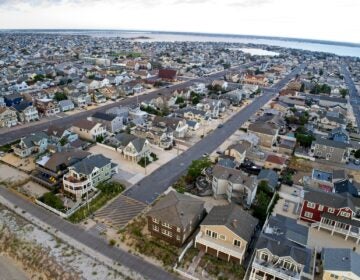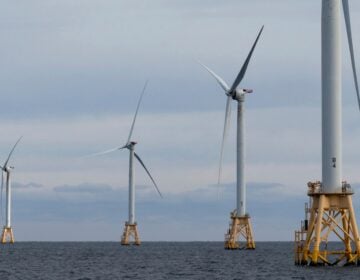Why Cape May’s monarch butterfly migration population varies so much
“We’re verging on a big year,” says Mark Garland, director of Cape May’s Monarch Monitoring Project.
-

A monarch butterfly in Cape May, New Jersey. (Courtesy of Mark Garland)
-
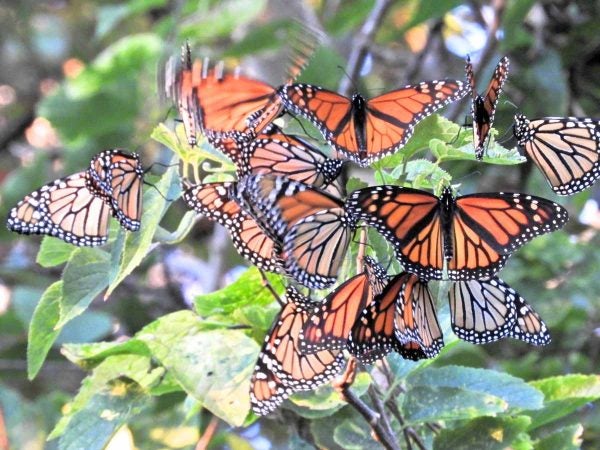
Monarch butterflies stop in Cape May during their 3000 mile migration from Canada to Mexico. (Photo courtesy of Mark Garland)
-
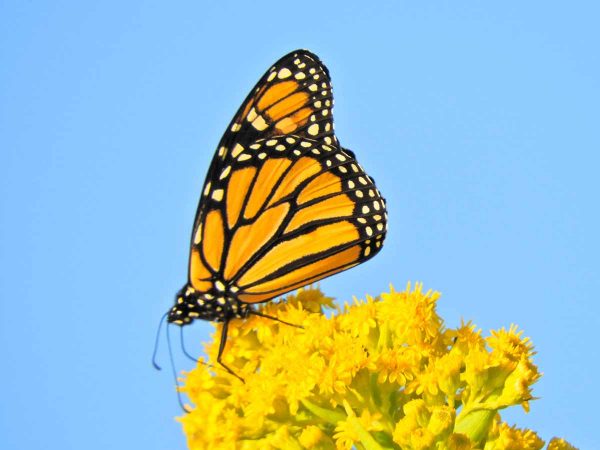
Monarch butterfly seen in Cape May. (Photo courtesy of Mark Garland)
-
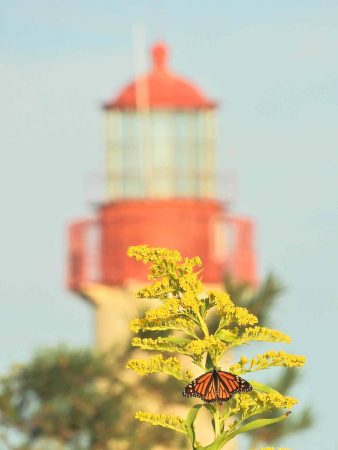
Monarch butterflies don't need lighthouses because they can read the earth's magnetic field like a compass. (Photo courtesy of Mark Garland)
-

The peak monarch butterfly migration season in Cape May runs from September 1 through October 31. (Photo courtesy of Mark Garland)
-
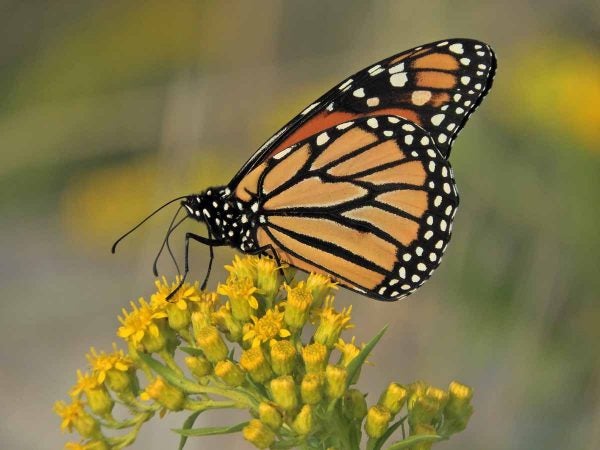
Monarch butterfly in Cape May. (Photo courtesy of Mark Garland)
This time of year, being in southern New Jersey can feel like being inside a snow globe. Only instead of snow, the sky is a blizzard of butterflies.
We’re now experiencing the height of monarch migration, and while it’s too early to assess whether this has been a good season or a bad one for this remarkable insect, there’s reason to hope.
“We’re verging on a big year,” says Mark Garland, director of Cape May’s Monarch Monitoring Project, a research and education arm of New Jersey Audubon’s Cape May Bird Observatory. “We’ve already seen some big pulses, and we’re expecting more to come through with the next cold front. We’re getting reports from Ontario, Connecticut, Ohio and Long Island that there are still lots of monarchs up north, heading our way.”
This is welcome news for residents of Cape May, my hometown and an important migratory stopover on the butterflies’ 3,000-mile journey from Canada to Mexico. For the past several weeks, my social media feeds have been flooded with videos and photos of these tiny, tiger-colored insects dancing around the island. Most of these posts have been captioned with statements of relief. One friend wrote that her “heart goes pitter” at the frequent sight of branches turned orange. “It’s been a brilliant year,” wrote another.
Acquaintances, neighbors and strangers are posting partly out of joy — watching for these gossamer wings has become an increasingly beloved pastime on this island — and partly to assuage a collective fear. In 2013, a distressing survey out of Mexico pointed to a sharp decline in the continental monarch butterfly population. Ever since, locals on the Cape have paid close attention to headlines warning of “grave danger” for these evocative creatures. Last year at this time on the Cape, a dearth of butterflies seemed to confirm everyone’s worst fears – the monarchs are disappearing. And this threat doesn’t belong to the butterflies alone – turns out, if we lose the monarchs, humans are in big trouble, too.
It’s no wonder, then, that Cape May residents have leaned on one another for reassurance, finding a cautious optimism in tweets and Instagram shots that indicate a flurry of winged activity. But should we really be taking heart in these images we see or, conversely, feeling downtrodden if the data turns up a dip in population?
WHYY investigated how Cape May’s data relates to those scary stats, and whether it’s all as bad as we’ve heard.
The Cape May census
No one knows for sure how many monarchs pass through here during the late summer/early fall migration.
“It’s all wild, educated guesses,” said Garland. “In 2012, the monarchs exploded out of the dunes at once and started flying south to Delaware, and the estimate everyone settled on was half a million. I think on a very good day in Cape May, it’s safe to say there are tens of thousands here, and definitely over 100,000 coming through Cape May in a good year. Someday, some clever technological scientist will develop a monarch detecting machine that identifies every monarch passing through.”
In the meantime, Cape May relies on the Monitoring Project, which has been censusing the butterflies for 26 seasons — longer than anywhere else — utilizing a sampling technique. From September 1 through October 15, a trained naturalist drives along a prescribed, 5-mile route that begins at the Higbee Wildlife Management Area, continues along New England Road, then Bayshore Road, down Sunset Boulevard and down Lighthouse Avenue. From here, the naturalist hugs the streets closest to the dunes throughout Cape May Point. Along the course, chosen for its variety of habitat, the driver counts monarchs. From October 16 until October 31, when the days are shorter, the drive happens twice per day.
While it may seem, on the surface, as though it would be more efficient to have a passenger or two in the car counting the butterflies, rather than a single driver, there was no way to know at the inception of this program how many volunteers would be available, so this was not an option, and it’s too late now to change the method. Instead, a lone naturalist drives at 20 miles per hour — a speed that sometimes angers other cars on the road — allowing him or her to count butterflies while doing due diligence to the driving. There’s no need for the driver’s head to be on a swivel — rather, he or she counts only the monarchs that enter his or her field of vision, directly in front of the windshield.
While this method tells us nothing about the absolute number of butterflies on the island at any given time, it does tell us a great deal about the relative number of butterflies here. The lowest count happened in 2004, when an average of less than nine butterflies per hour were registered. Last year came close to that dismal record, with an average of not-quite 15 monarchs per hour. A banner year was 1999, when the average was closer to 329 monarchs per hour. The average of all the year-end averages? 76. If the current season were to end right now, five weeks early, we’d be way up on last year, with just over 35 monarchs registered per hour.
While it’s tempting to panic if a season’s data reveals a dip – or to rejoice if the data shows a spike — experts say year-to-year fluctuations are to be expected; they may simply signify that monarch predators, such as spiders and ants, are doing especially well, which is typically a sign that the previous year was a robust one for the butterflies. Such cycles are natural.
Regional weather conditions also play a role. A lot of drab, grey weather in a particular area can lead to fungus problems for the plants that monarchs need to survive. So if New England and the eastern Great Lakes have seen a great deal of cloud cover throughout the summer, we can expect fewer butterflies making their way to New Jersey. Cape May’s numbers may also be affected by the prevailing winds of a particular autumn. Last season, we saw weeks of easterly winds, which isn’t typical during migration. In such a case, many monarchs end up on the west side of the Delaware Bay, and don’t come to Cape May at all.
Because of the variables, it’s best to analyze seasonal figures in 20-year sets, enough of a spread to even out vagaries and decipher trends in population.
The long-term data
The monarch is an enigma – equally resilient and vulnerable. Every year, weighing less than a paperclip, this creature manages one of the earth’s greatest migratory phenomenon. Starting as far north as New Brunswick or Nova Scotia, over the course of eight to ten weeks, these gossamer creatures make their way to the forested mountains west of Mexico City. In their poppy seed-sized brains, two molecules that read the earth’s magnetic field like a compass help them navigate direction. Though most monarchs are merely stopping over in Cape May, those that begin the journey here are looking at a 2,000-mile trip, as the crow flies. Those starting in Canada cover closer to 3,000 miles.
Perhaps most amazing, the monarchs that make the journey each year are part of a “super-generation” of butterflies, meaning they are at least four generations removed from the butterflies who made the trip the year prior. And yet, in most cases, each insect somehow manages to return to the same tree in Mexico on which its great – or great, great — grandparent wintered, or very close to it. Scientists have theorized that the monarchs are marking these trees with a biochemical of some sort, allowing descendants to locate them.
And yet, despite this near miraculous endurance, according to the Center for Biological Diversity, researchers put the chance of extinction for monarchs east of the Rocky Mountains at as much as 57 percent within the next 20 years. A major part of the problem is the depletion of the native wildflower milkweed, on which monarchs lay their eggs and on which the resulting caterpillars need to feed. As recently as 30 years ago, this milkweed would grow on farms, between rows of corn and soybeans. But as more farmers have turned to herbicide-resistant crops, allowing them to spray weed-killing chemicals like glyphosate with abandon, we’ve lost well over half of the milkweed in the country’s agricultural belt.
In 2014, the Natural Resources Defense Council filed a petition to the EPA, requesting that the agency once again review the safety of glyphosate, since use of the chemical had increased 10-fold since the previous EPA review in 1993, and since potential harm to monarchs had never been included as one of the agency’s safety benchmarks. After more than a year of inaction on the petition, the NRDC filed a lawsuit to nudge the EPA toward a response. Ultimately, the petition was denied.
The problems facing monarchs are only compounded by deforestation in Mexico, which threaten the butterflies’ overwintering grounds. Despite the creation of protected butterfly reserves, illegal logging has depleted this habitat and led to landslide events that do further damage. Furthermore, manmade climate change is making these forests more susceptible to pests and disease, while increasing the frequency and intensity of weather events which degrade the forest and result in large-scale mortality for the butterflies. In 2002, a winter storm in Mexico killed more than 200 million monarchs, or more than 75 percent of the population.
All of these factors have contributed to the major losses in continental population revealed by the aforementioned Mexico report, which indicated a 90 percent loss in the last 20 years. But Cape May appears to be an anomaly.
“Over the same period of study – 20 years — we’ve seen only a very slight decline in the long-term trend, or what statisticians call an insignificant amount of decline,” Garland said. “This means at a time when the monarchs aren’t doing so well as a whole, they’re holding their own in Cape May.”
The reason for this bright spot is difficult to pin down, though conservation biologists point to the distance between the northeast and the country’s agricultural belt, specifically the milkweed-killing chemicals employed there. Additionally, an uptick in butterfly gardening – or the practice of turning sterile, manicured backyards into monarch-friendly habitat lush with milkweed and other native plants – has played a key role.
As they travel south, many monarchs are funneled onto the Jersey peninsula, the result of trying to remain over land as long as possible before having to face a harrowing Delaware Bay crossing. If the butterflies get tired over land, they can rest, but if they grow tired over water, they’re in trouble. In other words, it’s better to first recharge and refuel at the tip of the Cape. Since the island has seen a blossoming interest in butterfly gardening over the last 20 years – not just at private homes, but at schools, convalescent centers, parks and municipal buildings – it’s become an increasingly attractive place for a rest stop.
Why we root for the monarch
My college roommate had a monarch tattoo, and she’s not alone — butterflies are among the top four most popular tattoo choices for women, along with flowers, fairies and hearts — though a quick Pinterest search shows men don’t shy away from butterfly ink, either. So what is it about this flittering insect that so appeals to us, we have it permanently etched into our skin?
The answer has roots in the beliefs of ancient civilizations in Greece, Rome and Egypt, all of whom thought butterflies represented the immortality of the human soul. The Aztecs saw a visiting butterfly as the embodiment of a deceased relative coming to reassure family that all was well — my roommate felt the presence of her late father whenever she spotted certain species. And in the Christian tradition, the transformation of caterpillar to butterfly has been used to symbolize resurrection, and the promise of an afterlife.
But our fascination with monarchs isn’t merely down to a spiritual significance – it’s down to survival. Turns out, we rely on the monarch for the growth of our food supply. According to a recent UN report, 35 percent of the crops produced by our agricultural industry — or the equivalent of $577 billion — is dependent on the pollination of birds, bees and bugs, including butterflies. Environmentalists warn that monarchs serve as a canary in the proverbial coal mine. Translation: if monarchs disappeared, we can expect other pollinators to follow, spelling disaster for humans.
How to help
The Monarch Monitoring Project tags monarchs as part of a national effort run through the University of Kansas. While they offer demonstrations, they also encourage members of the public to purchase their own tags, and become citizen scientists. This system — which involves placing a thin, plastic-like disc on the underside of a monarch’s wing — allows researchers to track the butterflies with the equivalent of an insect social security number. Seventy tags that have been placed in Cape May have turned up in Mexico, and since most butterflies there can’t be inspected, it’s likely that each tag recovered at the wintering grounds represents many more butterflies who have completed the journey.
The Monarch Monitoring Project also warns against releasing monarchs as part of a wedding or funeral ritual, since it can confuse scientific research, and against bringing monarchs across state lines — every year, Garland says, a well-meaning tourist drives butterflies into Cape May from Virginia or Pennsylvania, since they are studied here — a major ecological faux pas.
Finally, consider starting a butterfly garden. Pat Sutton, author of several wildlife books, wildlife gardening educator, and founding board member of the North American Butterfly Association, recommends beginners start by converting just 10 percent of their lawn to an area of native plants that will provide milkweed for caterpillars as well as nectar for mature butterflies.
“So many of our standard plantings may as well be plastic for wildlife,” she said. “The American suburban lawn is pretty devoid of anything fun to look at. It boggles my mind that more families wouldn’t want the wonderland that is a wildlife garden.”
For tips on which species will work best in your space, visit a native plant nursery, or check out patsuttonwildlife.com. If the monarch has taught us anything, it’s that small things can have a big impact.
And if you’d like to further raise awareness for the cause by tweeting or Instagramming the phenomenon yourself, check out the yellow-flowered seaside goldenrod plants in the dunes between Coral Avenue and St Pete’s Beach in Cape May Point during the day. According to David La Puma, Director of Cape May Bird Observatory, “This spot’s been gangbusters.”
WHYY is your source for fact-based, in-depth journalism and information. As a nonprofit organization, we rely on financial support from readers like you. Please give today.


